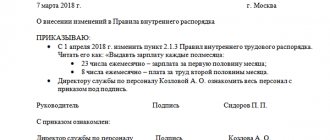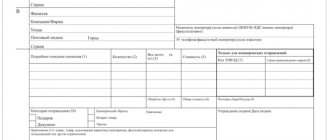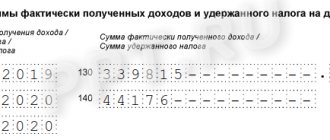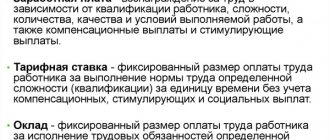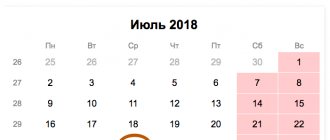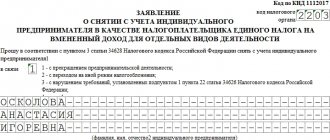Home / Taxes / What is VAT and when does it increase to 20 percent?
Back
Published: 05/22/2020
Reading time: 4 min
0
126
Value added tax is a turnover tax. This means that for its correct calculation, one should take into account not only the revenue that a legal entity receives into its current account, but also costs, the amount of tax on which reduces the total amount of VAT that the taxpayer will have to pay to the budget.
- Rules in force before July 1, 2020
- Deduction of “input” VAT when exporting works and services
- Reducing the list of raw materials with the ability to accept VAT for deduction without confirming the zero rate
- 5% rule
Dear readers! To solve your problem, call hotline 8 or ask a question on the website. It's free.
Ask a Question
Export confirmation
In order to justify the application of a zero VAT rate and to deduct the amount of input tax on goods (work, services) used for an export operation, the organization must confirm the fact of actual export (Article 165 of the Tax Code of the Russian Federation).
To confirm export you need:
- collect a package of documents provided for in Article 165 of the Tax Code of the Russian Federation. For more information about the composition of the documents and their execution, see How to confirm the right to apply the 0% VAT rate when exporting;
- fill out the relevant sections of the VAT return and submit them to the tax office along with the collected package of documents (clause 10 of article 165 of the Tax Code of the Russian Federation).
The period for submitting documents to the tax office to confirm export is limited to 180 calendar days.
For goods, this period is counted starting from the day the goods are placed under the customs export procedure (paragraph 1, clause 9, article 165 of the Tax Code of the Russian Federation). In relation to work (services) related to the export of goods, the start of the 180-day reporting period depends on the type of work (service).
It is necessary to confirm the fact of export to countries participating in the Customs Union in a special manner. For more information, see How to calculate VAT when exporting to member countries of the Customs Union.
If the organization fulfills all the necessary conditions, then when calculating VAT on goods (works, services) sold for export, it can apply a tax rate of 0 percent.
https://youtu.be/X2qe-Y1—R4
How can you return VAT when exporting: 2 options
Having the main task of returning VAT when exporting, know that the success of any enterprise largely depends on the experience and qualifications of a lawyer. He must not only understand the economic essence of this process and have a significant amount of knowledge about the taxation of business transactions, but also calculate the tax authorities’ reaction to his arguments and actions.
For Russian companies there are two ways to return VAT from the budget:
- transfer of the amount of previously paid VAT to the current account;
- crediting the amount spent to future tax payments.
Which option will be optimal for your company will be determined by the prevailing circumstances, as well as the measures taken by a tax lawyer. In practice, VAT refund issues are usually dealt with in court, and again it all depends on the reaction of your lawyer.
Since the vast majority of cases are resolved in court, a tax lawyer who defends your right to a VAT refund when exporting, with his knowledge and ability to persuade, should surpass the lawyers of the Federal Tax Service. He must present his position to the court as clearly as possible, using generally accepted judicial terminology. In short, you need a high-class professional who can solve the most complex problems. Otherwise, refunding VAT on exports, as well as in other areas of activity, will be extremely difficult and even impossible.
It is for this reason that every year dozens of clients who have experienced the harsh realities of the Russian Tax Code use the services of highly specialized expert lawyers with extensive experience in resolving tax disputes. Such specialists have an invaluable wealth of knowledge and skills accumulated over many years. They are always aware of the slightest nuances and the latest changes in tax law and choose the most effective strategy for each individual case.
Input VAT deduction
Deduction of input VAT (including recovered) on goods (work, services) used for the export operation is made on the basis of invoices issued to the exporting organization by suppliers. At the same time, invoices issued in violation of the procedure established by the Tax Code of the Russian Federation are not grounds for accepting input VAT amounts for deduction (clause 2 of Article 169 of the Tax Code of the Russian Federation).
For more information on preparing invoices, see How an invoice should be drawn up correctly.
Situation: how to maintain separate accounting to deduct input VAT if the organization supplies both for export and within Russia?
Develop the procedure for maintaining separate accounting yourself and establish it in the accounting policy for tax purposes (clause 10 of Article 165 of the Tax Code of the Russian Federation).
If an organization purchases goods both for export and for sale on the domestic market, it must keep separate records of input VAT (letter of the Ministry of Finance of Russia dated February 26, 2013 No. 03-07-08/5471). VAT must be accounted for for each export supply (clause 6 of Article 166 of the Tax Code of the Russian Federation). In practice, accountants organize separate accounting using additional subaccounts:
- to the accounts on which sold inventory items are recorded (41 “Goods”, 43 “Finished Products”);
- to accounts that record costs associated with production and sales (20 “Main production”, 44 “Sales expenses”);
- to account 90 “Sales”.
Particular attention should be paid to separate accounting of input VAT. For example, subaccounts can be opened for account 19 “Value added tax on acquired assets”:
- 19-1 “VAT on goods (work, services) intended for sale in Russia”;
- 19-2 “VAT on goods (work, services) intended for export.”
If it is not possible to organize separate accounting in this way, the amount of input VAT can be distributed proportionally:
- the cost of products shipped for export and to the domestic market;
- costs of production of products shipped for export and to the domestic market, etc.
The amount of VAT presented by suppliers on goods (work, services) used for sale on the domestic market must be deducted at the time the assets are accepted for accounting (clause 1 of Article 172 of the Tax Code of the Russian Federation).
The amount of VAT presented by suppliers on goods (works, services) used for export supplies must be deducted at the time of determining the tax base for this operation (Article 167 of the Tax Code of the Russian Federation). Such a moment could be:
- or the last day of the quarter in which a package of documents was collected confirming the legality of using the zero VAT rate (clause 9 of Article 167 of the Tax Code of the Russian Federation);
- or the day of shipment of goods (works, services), if export could not be confirmed (clause 1 of Article 167, clause 3 of Article 172 of the Tax Code of the Russian Federation).
Input VAT accepted for deduction before the specified period is subject to restoration. Such clarifications are contained in the letter of the Ministry of Finance of Russia dated June 3, 2011 No. 03-07-08/165.
An example of maintaining separate accounting for “input” VAT. The organization supplies goods both for export and within Russia
In the first quarter, Alpha LLC shipped products totaling RUB 1,108,000. (including VAT - 108,000 rubles), including for export in the amount of 400,000 rubles. (at VAT rate – 0%). The shipped products are fully paid for by the buyers. The total amount of input VAT on materials (work, services) used for the production of shipped products amounted to RUB 80,000. The organization collected the necessary documents to confirm real exports and submitted them to the tax office in the first quarter.
Alpha distributes input VAT amounts in proportion to the cost of products shipped for export and products shipped to the domestic market. This method is enshrined in the accounting policy of the organization.
In order to distribute the amount of input VAT subject to deduction for domestic and export transactions, Alpha’s accountant determined the share of revenue from the sale (excluding VAT) of export goods in the total revenue (excluding VAT) for the first quarter: 400,000 rubles. : (RUB 1,108,000 – RUB 108,000) = 0.4.
The amount of input VAT that is accepted for deduction on export transactions is equal to: 80,000 rubles. × 0.4 = 32,000 rub.
An organization can present it for deduction in the period in which the fact of actual export was confirmed, that is, in the declaration for the first quarter.
The amount of input VAT that is accepted for deduction on transactions in the domestic market is: RUB 80,000. – 32,000 rub. = 48,000 rub.
The organization also claims this amount as a deduction in its declaration for the first quarter.
Situation: can the tax inspectorate deny an organization the right to deduct input VAT on an export supply if, as a result of tax control measures, it was discovered that the supplier who issued the invoice did not transfer the amount of VAT to the budget?
According to the regulatory authorities, in this case the organization does not have the right to deduct VAT.
In private explanations, representatives of the tax department, referring to the resolutions of the Presidium of the Supreme Arbitration Court of the Russian Federation dated February 12, 2008 No. 12210/07 and the Plenum of the Supreme Arbitration Court of the Russian Federation dated October 12, 2006 No. 53, adhere to the following point of view. Input VAT cannot be deducted if the supplier who issued the invoice did not transfer the tax amount to the budget. If an organization deducts VAT on such an invoice, this may be regarded as receiving an unjustified tax benefit, since the organization acted without due diligence and caution.
There are examples of court decisions in which judges side with the tax inspectorates (see, for example, resolutions of the Federal Antimonopoly Service of the West Siberian District dated July 23, 2008 No. F04-4437/2008(8402-A75-41), dated November 1, 2006 No. F04-7402/2006(28147-A75-41), Moscow District dated February 4, 2008 No. KA-A40/8852-07, dated January 21, 2008 No. KA-A40/14503-07, North Caucasus District dated August 16, 2007 No. F08-4591/2007-1791A, Far Eastern District dated August 15, 2007 No. F03-A04/07-2/3045, dated March 2, 2007 No. F03-A24/07-2/ 42, East Siberian District dated October 9, 2007 No. A10-6310/06-F02-6898/07).
Advice: there are arguments that allow organizations to deduct input VAT on an export supply, even if the supplier who issued the invoice did not transfer the tax amount to the budget. They are as follows.
The fact that a counterparty violates its tax obligations does not in itself constitute evidence that the organization received an unjustified tax benefit (clause 10 of the Resolution of the Plenum of the Supreme Arbitration Court of the Russian Federation dated October 12, 2006 No. 53).
A tax benefit can be recognized as unjustified only if the inspection proves one of the following facts:
- the organization was aware of violations committed by the counterparty, in particular, due to the fact that the organization and its counterparty are affiliated or interdependent entities;
- The activities of the organization (or its interdependent persons) are aimed at carrying out transactions primarily with counterparties who do not fulfill their tax obligations.
This is stated in paragraph 10 of the resolution of the Plenum of the Supreme Arbitration Court of the Russian Federation dated October 12, 2006 No. 53.
Initially, it is necessary to proceed from the presumption of good faith of the taxpayer (clause 1 of the resolution of the Plenum of the Supreme Arbitration Court of the Russian Federation of October 12, 2006 No. 53). This means, in particular, that:
- the organization is considered innocent of an offense until its guilt is proven in the manner prescribed by law;
- an organization held accountable is not required to prove its innocence of committing an offense;
- The responsibility for proving circumstances indicating the fact of an offense and the guilt of the organization in committing it rests with the tax inspectorate.
This is directly provided for in paragraph 6 of Article 108 of the Tax Code of the Russian Federation.
In addition, the Tax Code of the Russian Federation does not make the right of an exporting organization to refund VAT dependent on the actual payment of tax by the supplier (Resolution of the Presidium of the Supreme Arbitration Court of the Russian Federation dated April 3, 2007 No. 15255/06).
There are numerous examples of court decisions in which judges support this point of view (see, for example, decisions of the Federal Antimonopoly Service of the Ural District dated August 13, 2008 No. F09-5655/08-S2, dated February 12, 2008 No. F09-11217/07 -C2, dated February 11, 2008 No. F09-207/08-S2, dated June 21, 2007 No. F09-4792/07-S2, Moscow District dated July 29, 2008 No. KA-A40/6001-08, dated May 14, 2008 No. KA-A40/4150-08, North Caucasus District dated July 16, 2008 No. F08-4042/2008, Volga District dated July 15, 2008 No. A57-579/08, dated June 26 2008 No. A12-16660/07-C36, North-Western District dated July 11, 2008 No. A05-6929/2007, dated March 31, 2008 No. A05-7448/2007, West Siberian District dated March 24, 2008 No. F04-2089/2008(2773-A46-25), Central District dated January 17, 2008 No. A48-1017/07-18, dated June 30, 2008 No. A23-2696/07A-14-141, East Siberian District dated January 22, 2008 No. A19-12243/07-50-F02-9910/07, dated October 23, 2007 No. A19-7563/07-30-F02-8033/07, Volga-Vyatka District dated July 10, 2007 No. A11-5837/2006-K2-23/461).
Calculation of VAT payable
When calculating the amount of VAT payable to the budget (reimbursement from the budget), take into account the input tax on goods (work, services) used for export operations on a general basis. It reduces the amount of VAT calculated on activities that are taxed at rates of 18, 10, 18/118 or 10/110 percent. If the difference between the accrued and deductible VAT is positive, it must be transferred to the budget. If this difference is negative, the organization has the right to reimburse the tax from the budget. Moreover, if an organization is engaged only in export operations, then the input VAT accepted for deduction will be reimbursed from the budget in full. This follows from articles 173, 176 of the Tax Code of the Russian Federation.
When separate accounting is not needed
Distribution of input VAT is not required if the company receives income not subject to added tax that is not related to sales operations. This can include:
- % on securities,
- Penalties received from debtors;
- Dividends received, etc.
Another exception is the 5% rule, according to which the input tax may not be divided if the share of non-taxable expenses in the total expenses is less than 5 percent. In this case, it becomes necessary to keep separate records of expenditure indicators during the quarter.
Desk inspection
Having received a VAT return and documents confirming exports, the tax inspectorate can conduct a desk audit of them, as well as counter-checks of the organization’s suppliers, make requests to the customs authorities, etc. (Article 88 of the Tax Code of the Russian Federation). If the declaration reflects the amount of VAT to be reimbursed from the budget, the tax inspectorate will conduct a desk audit without fail (paragraph 2, paragraph 1, article 176 of the Tax Code of the Russian Federation).
Based on the results of the desk audit, the tax inspectorate may make one of the following decisions:
- refund the amount of input VAT on goods (work, services) used for the export operation;
- refuse VAT refund.
The tax inspectorate is obliged to notify the organization in writing of its decision within five days from the date of its adoption (clause 9 of article 176 of the Tax Code of the Russian Federation).
If the inspectorate decides to refund the tax, then the amount to be refunded is first used to pay off the arrears, pay penalties and sanctions on federal taxes. The inspectorate conducts this assessment independently. This is stated in paragraph 4 of Article 176 of the Tax Code of the Russian Federation.
Based on the organization’s application, the inspection must return the remaining amount of the input tax to the current account or offset against upcoming payments for VAT or other federal taxes (clause 6 of Article 176 of the Tax Code of the Russian Federation).
Application procedure for VAT refund
Without waiting for the end of the desk audit, the organization can reimburse VAT using the application procedure (clause 1 of Article 176.1 of the Tax Code of the Russian Federation).
An example of reflecting in accounting transactions related to VAT refunds on exported goods
On January 12, Alpha LLC entered into a contract for the supply of wood for export to Finland. The price of the export contract is USD 22,000. In the same month, Alpha purchased a shipment of wood for 590,000 rubles. (including VAT - 90,000 rubles) and paid for the purchased goods.
The wood was shipped to the buyer on January 19. This is confirmed on the customs declaration. Payment from the Finnish company was received on January 22. Selling expenses amounted to 3,000 rubles.
The notional exchange rate of the US dollar on the dates of transactions was:
- January 19, 2011 32.5747 rubles/USD;
- January 22, 2011 RUB 32.7991/USD.
In January:
Debit 41 Credit 60 – 500,000 rub. (RUB 590,000 – RUB 90,000) – wood was posted to the warehouse;
Debit 19 Credit 60 – 90,000 rub. – input VAT on purchased wood has been taken into account (based on the supplier’s invoice);
Debit 60 Credit 51 – 590,000 rub. – money is transferred to the supplier.
January 19:
Debit 62 Credit 90-1 – 716,643 rubles. (USD 22,000 × RUB 32.5747/USD) – revenue from the sale of goods for export is reflected;
Debit 90-2 Credit 41 – 500,000 rub. – the cost of goods sold is written off;
Debit 90-2 Credit 44 – 3000 rub. – sales expenses are written off.
January 22:
Debit 52 subaccount “Transit currency account” Credit 62 – 721,580 rub. (USD 22,000 × RUB 32.7991/USD) – money received under an export contract;
Debit 62 Credit 91-1 – 4937 rub. (RUB 721,580 – RUB 716,643) – a positive exchange rate difference is reflected.
In March, Alpha collected all the documents that confirm the export. The accountant made the following entry in accounting:
Debit 68 subaccount “Calculations for VAT” Credit 19 – 90,000 rubles. – input VAT paid to the supplier of exported goods has been accepted for deduction.
The Alpha accountant submitted the VAT return for the first quarter to the tax office on April 20. The declaration indicates export proceeds, converted into rubles on the date of shipment of goods: USD 22,000 × RUB 32.5747/USD = RUB 716,643.
In the first quarter of this year, Alpha did not charge VAT at rates other than 0 percent. Therefore, at the end of this quarter, the amount of tax deduction exceeds the amount of VAT on sales (the VAT refundable is reflected in the declaration). Alpha does not use the declarative procedure for VAT refund. After a desk audit, the tax inspectorate decided to reimburse the organization for input VAT paid to the supplier of exported goods (Article 176 of the Tax Code of the Russian Federation).
At the time of the decision to refund VAT, Alpha had no debt to the budget. Therefore, at the request of the organization, the tax amount was transferred to its current account. This was reflected in the accounting as follows:
Debit 51 Credit 68 subaccount “VAT calculations” – 90,000 rubles. – the amount of refunded tax has been credited to the current account.
How to calculate VAT refund when exporting?
Let's look at the benefits of selling goods abroad to the Russian Federation. For example, a product was purchased or produced in Russia, and its cost is about 118 rubles. Then VAT equal to 18 rubles will be paid to the budget.
Selling it in Russia, for example, for 125 rubles. (with VAT = 19.07 rubles), you will receive a margin of 7 rubles, of which transfer 1.07 rubles to the budget. VAT (the difference between 19.07 rubles and 18 rubles) and you will be left with 5.93 rubles.
When you sell this product for export, the situation changes dramatically. We take the same product at a cost of 118 rubles. (VAT = 18 rubles) and export it for 125 rubles. With a zero export rate, VAT will be equal to 0 rubles. As a result, the margin will be 7 rubles. (125 rubles minus 118 rubles).
You pay 18 rubles to the budget. tax, but in reality your export VAT is 0 rubles, i.e. the budget owes you 18 rubles. As a result, the total margin will be 25 rubles. (7 rubles + 18 rubles) instead of the previous 5.93 rubles.
Now imagine that a product exported outside of Russia costs 1,000,000 rubles. Due to export VAT, your margin increases by 152,000 rubles. or 15.2%.
- International tax organization
Deduction for unconfirmed exports
If, after 180 calendar days after the established period, the organization does not collect a package of documents confirming export, operations for the sale of goods (work, services) are subject to taxation at a rate of 10 or 18 percent. This procedure is provided for in paragraph 9 of Article 165 of the Tax Code of the Russian Federation.
In this case, the moment of determining the tax base is the day of shipment (transfer) of goods (work, services) (clause 9 of Article 167 of the Tax Code of the Russian Federation). If the organization subsequently submits to the tax inspectorate a package of documents justifying the application of a zero tax rate, then the amounts of VAT paid at a rate of 10 or 18 percent can be deducted (clause 10 of Article 171, paragraph 2 of clause 3 of Article 172 Tax Code of the Russian Federation).
The amount of input VAT on goods (work, services) that are used to carry out an unconfirmed export transaction can be deducted at the time of shipment (clause 3 of Article 172 of the Tax Code of the Russian Federation).
For more information on what to do if the organization has not collected the required package of documents within the prescribed period, see How to calculate VAT for unconfirmed exports.
Is the deduction still valid for the loss of exported goods?
When carrying out export operations, cases of loss of goods occur. Disposal of goods in such a situation does not apply to transactions subject to VAT (clause 1 of Article 146 of the Tax Code of the Russian Federation). In addition, if the perpetrators compensated for the corresponding losses, then there is no reason to include the lost goods in the tax base.
Input tax on lost goods is also not deductible. Such amounts relate to transactions that are not subject to VAT, which means: the condition for deduction established in paragraph 2 of Art. 171 of the Tax Code of the Russian Federation, not fulfilled. This approach of the regulatory authorities can be seen in the letters of the Ministry of Finance of Russia dated April 16, 2014 No. 03-07-08/17292, dated January 21, 2016 No. 03-03-06/1/1997.
But loss of goods can also occur for natural reasons. The Russian Ministry of Finance, in letter No. 03-07-08/244 dated 08/09/2012, explained that in this case, input VAT can be deducted, but only within the limits provided for natural loss. Arguing their statement, the ministry’s specialists refer to the norms of subsection. 2 clause 7 art. 254 Tax Code of the Russian Federation.

